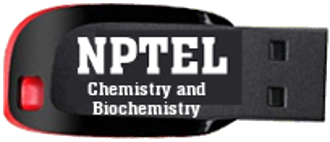
Media Storage Type : 64 GB USB Stick
NPTEL Subject Matter Expert : Prof. Aasheesh Srivastava, Prof. Bharathwaj Sathyamoorthy
NPTEL Co-ordinating Institute : IIT Madras
NPTEL Lecture Count : 51
NPTEL Course Size : 39 GB
NPTEL PDF Text Transcription : Available and Included
NPTEL Subtitle Transcription : Available and Included (SRT)
Lecture Titles:
Lecture 1 - A brief history of the beginnings of quantitation in Chemistry, defining chemical stoichiometry and molarity
Lecture 2 - Defining Molality and Normality, relationship with Molarity
Lecture 3 - Defining other parameters for concentration (%, ppm/ppb, p-value)
Lecture 4 - Relationship between various concentration parameters
Lecture 5 - Problems on acid-base equilibria, calculation of pH of strong and weak acids
Lecture 6 - Brief introduction to normal distribution and statistical analysis
Lecture 7 - Using a spreadsheet towards basic statistical analysis, exact equation of error propagation, accuracy and precision
Lecture 8 - Error propagation and its application to a few examples, significant figures
Lecture 9 - Introduction to use spreadsheets to analyze errors, reiteration of significant figures, repeats and reproducibility
Lecture 10 - Classification of errors
Lecture 11 - A look at uncertainties in a measurement taking an example
Lecture 12 - A comprehensive and step-wise look at an experimental protocol towards understanding systematic errors in an experiment
Lecture 13 - Introductory Statistics - Part 1
Lecture 14 - Introductory Statistics - Part 2
Lecture 15 - Hypothesis testing and Finding Outliers - Part 1
Lecture 16 - Hypothesis testing and Finding Outliers - Part 2
Lecture 17 - Pooling of data
Lecture 18 - Introduction to Analysis of Variance (ANOVA) and comparing precisions
Lecture 19 - Protocol for undertaking ANOVA - Part 1
Lecture 20 - Protocol for undertaking ANOVA - Part 2
Lecture 21 - ANOVA and Least Significant Difference (LSD)
Lecture 22 - ANOVA and solved Least Significant Difference example
Lecture 23 - Using spreadsheet software to perform data analysis towards calibrating a burette
Lecture 24 - Using spreadsheet to analyze linear dependence between two variables
Lecture 25 - Using spreadsheet and MATLAB towards data analysis with example of rate kinetics
Lecture 26 - Simulating simple straight lines and kinetic curves using MATLAB
Lecture 27 - Simulating the Michaelis Menten kinetics using MATLAB
Lecture 28 - Curve fitting and simulating with variance for the Michaelis Menten kinetics using MATLAB
Lecture 29 - Standards and Volumetric/Gravimetric titrations - Part 1
Lecture 30 - Standards and Volumetric/Gravimetric titrations - Part 2
Lecture 31 - Standards and Volumetric/Gravimetric titrations - Part 3
Lecture 32 - Standards and Volumetric/Gravimetric titrations - Part 4
Lecture 33 - Standards and Volumetric/Gravimetric titrations - Part 5
Lecture 34 - Analytical Separations - Multistage extractions - Part 1
Lecture 35 - Analytical Separations - Multistage extractions - Part 2
Lecture 36 - Analytical Separations - Chromatography - Part 1
Lecture 37 - Analytical Separations - Chromatography - Part 2
Lecture 38 - Analytical Separations - Electrophoresis, Capillary electrophoresis, Isoelectric Focusing
Lecture 39 - Basics of Chromatography - Part 1
Lecture 40 - Basics of Chromatography - Part 2
Lecture 41 - Chromatography - Concept of Theoretical plates
Lecture 42 - Chromatography - Rate Theory
Lecture 43 - Practice of Chromatography - HPLC
Lecture 44 - Practice of Chromatography - Gas Chromatography
Lecture 45 - Supercritical Fluid Chromatography
Lecture 46 - Detectors employed during chromatographic separations
Lecture 47 - Course Revision
Lecture 48 - Course Revision - Week 1 to 3
Lecture 49 - Course Revision - Week 4 and 5
Lecture 50 - Course Revision - Week 6 and 7
Lecture 51 - Course Revision - Week 8 to 11

